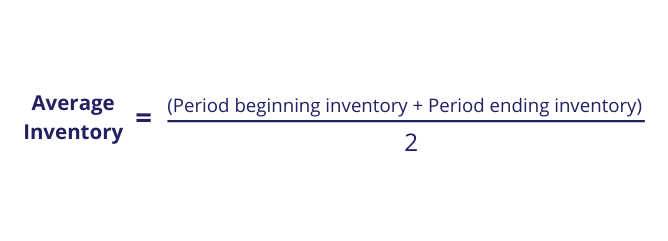

Applying inventory turnover ratio to a businessĪ low inventory turnover could mean that the product isn’t priced properly, that there isn’t much demand for the product, or that it isn’t positioned properly.Ī high inventory turnover might mean that the product is priced too low, that the company could sell even more of them if they had them to sell, or that the company didn’t buy or manufacture enough to meet demand.Ī high turnover rate is better than a low rate except when it means you can’t keep the product in stock, so you lose sales opportunities. Is that number good or bad? It depends on Bob’s goals for book sales and industry patterns. What is the inventory turnover ratio formula Average Inventory (Beginning Inventory Ending Inventory) / 2 Inventory Turnover Ratio Sales / Average. That means he sold almost a third of his inventory in that period. Applying the formula, his ratio is 1,000 ÷ 3,500 =. His beginning inventory is $3,000 and his ending inventory for the period is $4,000 (averaging to $3,500). The Inventory turnover is an efficiency ratio that shows how many times a company sells and replaces inventory in each time. His cost of goods on his income statement is $1,000. The calculation is very simple: simply divide the average stock per product by the sales, multiplying by the. Let’s say a self-published author named Bob sells printed copies of his book on his website, at online book retailers, and in-person. The inventory turnover ratio is an important financial ratio that indicates a companys past ability to sell its goods. Inventory Turnover in days: Excel calculation. Here’s the equation: Inventory turnover ratio = cost of goods sold ÷ average inventory. Average inventory is determined by adding together the inventory for the first month in a given period to the last month in the period and dividing it by two.
INVENTORY TURNOVER FORMULA PLUS
The cost of goods sold, which is usually reported on the income statement, is the cost of materials for the product plus labor.
INVENTORY TURNOVER FORMULA HOW TO
How to calculate inventory turnover ratioĪccountants use a simple formula to calculate the turnover rate or ratio: Cost of goods sold divided by average inventory. Unsold inventory can eventually be obsolete and unsellable, making it a potential financial liability for a company. In addition, storing inventory costs money that the inventory isn’t generating when it sits in a warehouse or elsewhere. Too many “jeggings” today could mean unsold inventory (also known as dead stock) and a financial loss tomorrow. The inventory turnover rate is particularly important with perishable products such as produce and fashion, which is ever-changing.


 0 kommentar(er)
0 kommentar(er)
